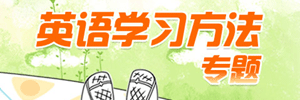复活节风俗大揭秘
As with almost all "Christian" holidays, Easter has been secularized and commercialized. The dichotomous nature of Easter and its symbols, however, is not necessarily a modern fabrication.
和其它基督教节日一样,复活节正慢慢"被世俗"和"被商业"。即便如此,复活节的这两个性质和它的标志并不是必然的"现代产物"。
The History of Easter
复活节的历史
Since its conception as a holy celebration in the second century, Easter has had its non-religious side. In fact, Easter was originally a pagan festival.
"复活节是神圣的庆典"的概念在公元200年已经形成,自那时起,复活节就站在了非宗教的一方。而事实上,最初的复活节是异教徒的节日。
The ancient Saxons celebrated the return of spring with an uproarious festival commemorating their goddess of offspring and of springtime, Eastre. When the second-century Christian missionaries encountered the tribes of the north with their pagan celebrations, they attempted to convert them to Christianity. They did so, however, in a clandestine manner.
古撒克逊人庆祝春至时非常热闹,因为这也纪念他们祖先和春天的"复活"。在公元200年,基督教的传教士并偶然来到这个拥有异教庆典的北方部落。这些传教士尝试让撒克逊人改信基督教,而他们使用的方法非常隐秘。
It would have been suicide for the very early Christian converts to celebrate their holy days with observances that did not coincide with celebrations that already existed. To save lives, the missionaries cleverly decided to spread their religious message slowly throughout the populations by allowing them to continue to celebrate pagan feasts, but to do so in a Christian manner.
早期的基督教人为了庆祝他们神圣的节日而在仪式中自杀,然而这些仪式并没有与以前的庆祝仪式相类似。为了拯救生命,传教士略施小计,在人群中慢慢散布神明的信息,谎称神明允许人们继续庆祝异教节日,但是要使用基督教的方式进行庆祝。
As it happened, the pagan festival of Eastre occurred at the same time of year as the Christian observance of the Resurrection of Christ. It made sense, therefore, to alter the festival itself, to make it a Christian celebration as converts were slowly won over. The early name, Eastre, was eventually changed to its modern spelling, Easter.
就这样,复活节在同年出现了,而且被当作耶稣复活的基督教仪式。因此,这个节日就被慢慢被改变,渐渐转变为基督教的一个节日。于是,人们渐渐皈依基督教。而复活节早期的名字"Eastre",最后也被改成流传至今的拼法"Easter"。
The Date of Easter
复活节的日期
Prior to A.D. 325, Easter was variously celebrated on different days of the week, including Friday, Saturday, and Sunday. In that year, the Council of Nicaea was convened by emperor Constantine. It issued the Easter Rule which states that Easter shall be celebrated on the first Sunday that occurs after the first full moon on or after the vernal equinox. However, a caveat must be introduced here. The "full moon" in the rule is the ecclesiastical full moon, which is defined as the fourteenth day of a tabular lunation, where day 1 corresponds to the ecclesiastical New Moon. It does not always occur on the same date as the astronomical full moon. The ecclesiastical "vernal equinox" is always on March 21. Therefore, Easter must be celebrated on a Sunday between the dates of March 22 and April 25.
在公元前325年之前,复活节的庆祝时间可以是一周中不同的时间,而这些时间包括星期五、星期六和星期天。在那些年里,皇帝康斯坦丁组建了尼西亚理事会。这个理事会制定了复活节的标准:复活节应该在第一个满月后或是春分后的第一个星期进行庆祝。在这里,我们要作一下解释。在规定中所指的"满月"是基督教的满月,而"满月"的时间定在阴历月份的第十四天,那么,这个月的1号就是基督教的"新月"。由于天文满月,复活节的日期不会是每年的同一天。另外,基督教的"春分"通常是3月21日。因此,复活节必须在3月22日-4月24日之间的其中一个星期天进行庆祝。
The Lenten Season
四旬斋季节
Lent is the forty-six day period just prior to Easter Sunday. It begins on Ash Wednesday. Mardi Gras (French for "Fat Tuesday") is a celebration, sometimes called "Carnival," practiced around the world, on the Tuesday prior to Ash Wednesday. It was designed as a way to "get it all out" before the sacrifices of Lent began. New Orleans is the focal point of Mardi Gras celebrations in the U.S. Read about the religious meanings of the Lenten Season.
四旬斋是早期复活节里面为期46天的时期。四旬斋在开始于圣灰星期三。"狂欢节"也称为"嘉年华"。在早期,它横跨星期三和圣灰星期四,是一个全世界都进行的庆典。在四旬斋献祭开始前,狂欢节是一个使得身心舒畅的节日。其中,新奥尔良是美国狂欢节的焦点。因此,我们要好好理解四旬斋的宗教含义。
The Easter Bunny
复活兔
The Easter Bunny is not a modern invention. The symbol originated with the pagan festival of Eastre. The goddess, Eastre, was worshipped by the Anglo-Saxons through her earthly symbol, the rabbit.
复活兔并不是现代世界的产物。复活兔起源于异教的复活节。当时,耶稣的世俗象征是一个兔子,并被盎格鲁撒克逊人供奉着。
The Germans brought the symbol of the Easter rabbit to America. It was widely ignored by other Christians until shortly after the Civil War. In fact, Easter itself was not widely celebrated in America until after that time.
而德国人将复活兔带到了美国。直至美国南北战争后,复活兔才被大多数基督教人士所重视。事实上,在这次内战结束后,复活节也未在美国被人们广泛地庆祝。
The Easter Egg
复活蛋
As with the Easter Bunny and the holiday itself, the Easter Egg predates the Christian holiday of Easter. The exchange of eggs in the springtime is a custom that was centuries old when Easter was first celebrated by Christians.
与复活兔和复活节一样,复活蛋预示着圣诞节的即将到来。当基督教徒庆祝第一个复活节后,人们开始春天互相交换复活蛋,而这已成为了人们好几百年的习俗。
From the earliest times, the egg was a symbol of rebirth in most cultures. Eggs were often wrapped in gold leaf or, if you were a peasant, colored brightly by boiling them with the leaves or petals of certain flowers.
在早期,复活蛋许多文明中象征着"再生"。人们常常用金色的叶子包裹复活蛋,或是农民的做法:将复活蛋画得色彩斑斓,并把它和叶子或是真花瓣一起煮沸。
Today, children hunt colored eggs and place them in Easter baskets along with the modern version of real Easter eggs -- those made of plastic or chocolate candy.
在今天,孩子们到处搜刮复活蛋,并将这些蛋放到复活节篮子中。为什么呢?他们只是为了复活蛋的现代意义:复活蛋是由软糖或巧克力做的。
>>点击查看更多关于英语文化的文章

